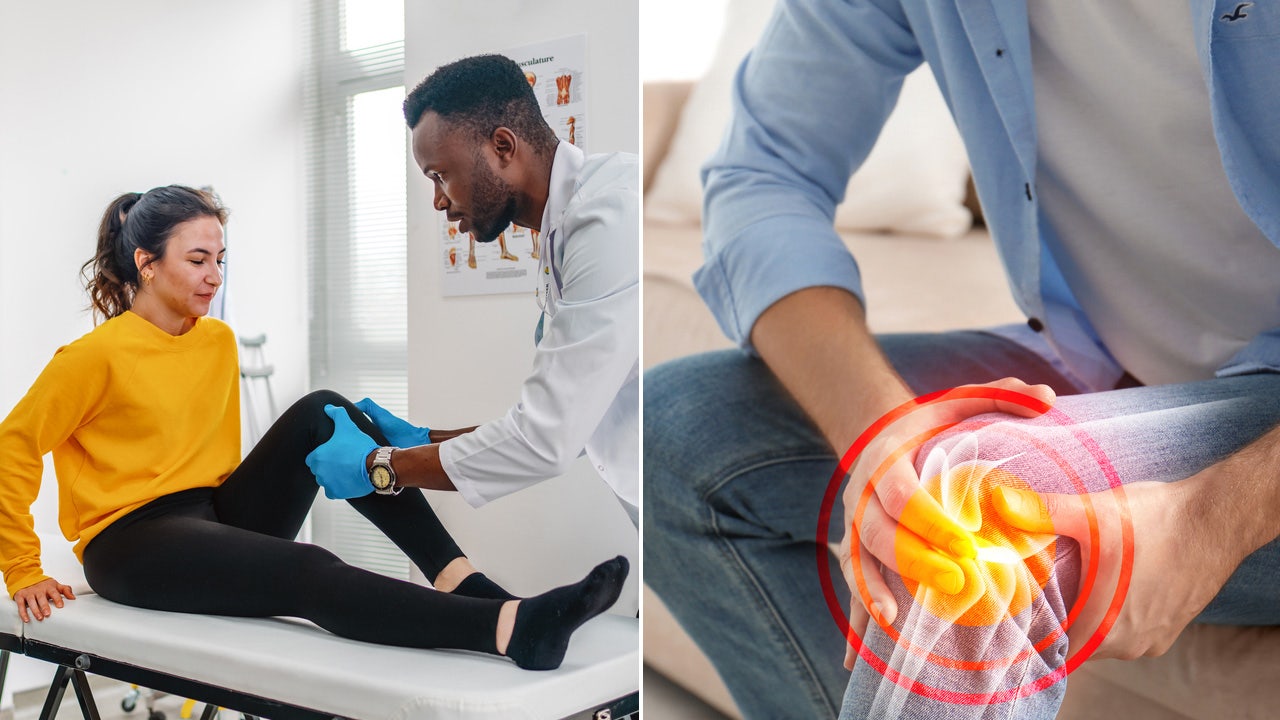Approximately 25% of adults in the United States have received a diagnosis of arthritis, specifically affecting the knee joint, according to the CDC. Arthritis of the knee occurs when the protective cartilage breaks down, causing bone-on-bone contact and resulting in pain, stiffness, and swelling, says Dr. Nakul Karkare, a joint replacement surgeon at Complete Orthopedics in New York.
While there is no cure for arthritis, there are ways to alleviate symptoms and slow down its progression. Fox News Digital spoke to Dr. Karkare, who shared six tips for preserving knee health following an arthritis diagnosis:
1. Maintain a healthy weight: Excess weight places additional strain on the knees, exacerbating arthritis symptoms. Losing weight through a balanced diet and regular exercise can help relieve stress on the knees.
2. Stay active: Arthritis often leads to a sedentary lifestyle, contributing to weight gain and increased pain. Combat this cycle by engaging in low-impact exercises such as swimming, cycling, and walking. These activities strengthen the muscles around the knees without putting excessive pressure on the joints. To reduce stress on the kneecap, adjust the seat height if cycling causes discomfort.
3. Use assistive devices and braces: Despite the negative associations with aging and disability, canes can provide stability and comfort, reducing pressure and minimizing pain flare-ups during activities. Walkers and canes also prevent falls, while braces can correct deformities and relieve knee pain.
4. Choose supportive footwear: Opt for shoes with proper cushioning and arch support to absorb shock and reduce strain on the knees. Individuals with flat feet may benefit from custom orthotics prescribed by a podiatrist to improve limb alignment.
5. Consider injections for pain relief: Cortisone injections, containing synthetic corticosteroids, swiftly reduce inflammation. “Gel” or “rooster comb” injections, utilizing hyaluronic acid, aim to alleviate joint pain and enhance mobility in osteoarthritis patients. Platelet-rich plasma and stem cell injections show promise but require further research and are not typically covered by insurance.
6. Stay informed: When other treatments fail to relieve arthritis pain, newer minimally invasive surgical techniques, such as custom knee replacement, are available. This procedure involves replacing a damaged knee joint with a custom-designed implant through smaller incisions, leading to quicker recovery, reduced post-operative pain, and potentially better long-term outcomes.
According to the Osteoarthritis Action Alliance, approximately 43% of people with osteoarthritis in the U.S. are 65 or older, while 88% are 45 or older. Knee arthritis is most commonly diagnosed between the ages of 55 and 64, and more than half of individuals with symptomatic knee arthritis are younger than 65.
To learn more about health and wellness, read other pieces from Fox News Digital’s “Be Well” series. Melissa Rudy is the health editor and a member of the lifestyle team at Fox News Digital.
Denial of responsibility! VigourTimes is an automatic aggregator of Global media. In each content, the hyperlink to the primary source is specified. All trademarks belong to their rightful owners, and all materials to their authors. For any complaint, please reach us at – [email protected]. We will take necessary action within 24 hours.


